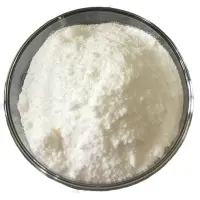-
Categories
-
Pharmaceutical Intermediates
-
Active Pharmaceutical Ingredients
-
Food Additives
- Industrial Coatings
- Agrochemicals
- Dyes and Pigments
- Surfactant
- Flavors and Fragrances
- Chemical Reagents
- Catalyst and Auxiliary
- Natural Products
- Inorganic Chemistry
-
Organic Chemistry
-
Biochemical Engineering
- Analytical Chemistry
-
Cosmetic Ingredient
- Water Treatment Chemical
-
Pharmaceutical Intermediates
Promotion
ECHEMI Mall
Wholesale
Weekly Price
Exhibition
News
-
Trade Service
Diacerein is a well-known pharmaceutical drug that is widely used to treat a variety of skin conditions, including psoriasis and eczema.
The drug is a synthetic derivative of a natural compound called cerebroside, which is found in the brain and other tissues.
Diacerein has been shown to have anti-inflammatory and antipruritic (anti-itching) properties, which make it useful for treating skin conditions that are characterized by inflammation and itching.
There are several different synthetic routes that can be used to prepare diacerein.
The choice of synthetic route depends on a variety of factors, including the availability of starting materials, the desired yield and purity of the product, and the cost and complexity of the synthesis.
One of the most common synthetic routes for diacerein involves the reaction of N-acetyl-d-glucosamine with 3,5-dimethoxybenzoic acid.
This reaction is carried out in the presence of a strong acid catalyst, such as sulfuric acid, and results in the formation of the desired diacerein compound.
This synthetic route is relatively simple and can be carried out on a large scale using standard organic synthesis techniques.
Another synthetic route for diacerein involves the reaction of salicylaldehyde with a series of different reactants, including glycine, serine, and cysteine.
This synthetic route is more complex than the first one, and requires a higher degree of purification to remove impurities.
However, this route can be used to prepare a variety of different diacerein derivatives, which may have different pharmacological properties.
A third synthetic route for diacerein involves the reaction of 5-fluoro-2-oxindole with methyl 3-dehydroquinate.
This synthetic route is similar to the first one, and also involves the use of a strong acid catalyst.
This route is less commonly used than the first two, but may be useful in certain applications where purity and yield are critical.
Overall, the synthetic routes for diacerein can vary widely depending on the desired properties of the final product.
These routes involve a range of different reactants and catalysts, and require a range of different purification and isolation steps to obtain the desired compound.
Despite the complexity of the synthetic routes, however, diacerein is now widely available as a pharmaceutical drug and is used to treat a variety of skin conditions.







